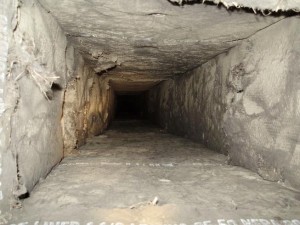 Air duct cleaning service providers may tell you that they need to apply a chemical biocide to the inside of your ducts to kill bacteria (germs), and fungi (mold) and prevent future biological growth. Careful consideration should be taken before allowing the application of chemicals within your air ducts. Due to the varying ranges of temperature, humidity and air turbulence there are very few chemicals that are approved for the use within ventilation systems.
Air duct cleaning service providers may tell you that they need to apply a chemical biocide to the inside of your ducts to kill bacteria (germs), and fungi (mold) and prevent future biological growth. Careful consideration should be taken before allowing the application of chemicals within your air ducts. Due to the varying ranges of temperature, humidity and air turbulence there are very few chemicals that are approved for the use within ventilation systems.
Chemical Off Gassing
Organic chemicals are widely used as ingredients in cleaning and sanitizing products. Volatile organic compounds (VOCs) are emitted as gases from certain solids or liquids. Even a nearly odorless material can cause significant problems when re-circulated through air ducts in a closed environment. VOCs include a variety of chemicals, some of which may have short- and long-term adverse health effects.
NADCA’s Position Regarding the Use of Antimicrobials
The National Air Duct Cleaners Association’s new position regarding the use of antimicrobial chemicals is as follows: “At this point in time, until EPA clarifies their position, NADCA does not recommend the use of any sanitizer or disinfectant products in air ducts.” This position was adopted to generate awareness among NADCA members of the potential legal liabilities they face by selling and applying antimicrobial chemicals. This is strictly a matter of managing legal risks. NADCA’s position deals specifically with sanitizers and disinfectants, not with any other product claims. Also, this position covers only air ducts, not HVAC components such as coils
No EPA Registered Products for Fiberglass Air Ducts
There are no products that are currently registered by EPA as biocides for use on fiberglass duct board or fiberglass lined ducts so it is important to determine if sections of your system contain these materials before permitting the application of any biocide.
If You Choose to Use Chemicals in your Air Duct Cleaning Project
- Review the product sheet showing usage and application of the product.
- Review the Material Safety Data Sheet (MSDS) to understand if chemicals will cause any health or property concerns.
- Review the Fact sheet on the product classification being applied.
If You Have a Problem Related to Chemicals Applied Within Your Air Ducts
- Open doors and windows to ventilate the area with fresh air.
- Operate the fan of the HVAC system
- Exit the premises if negatively affected.
- Contact and Industrial Hygienist to discuss the problem. Be sure to have a copy of the MSDS.


 Most commercial air duct systems are internally lined with fiberglass duct liners. Deteriorating fiberglass duct liner is a very common cause for indoor air quality complaints and adverse health effects.
Most commercial air duct systems are internally lined with fiberglass duct liners. Deteriorating fiberglass duct liner is a very common cause for indoor air quality complaints and adverse health effects.